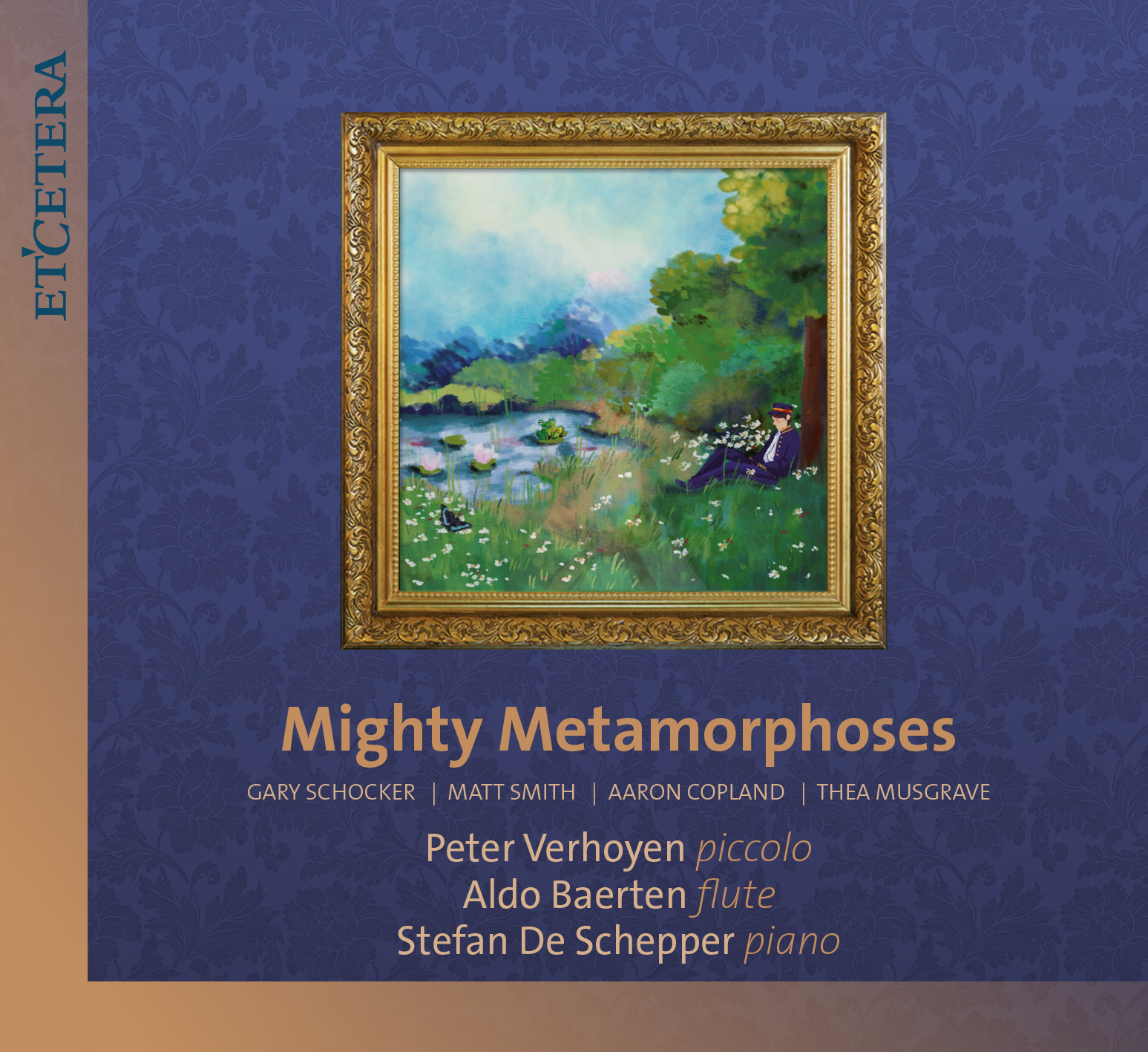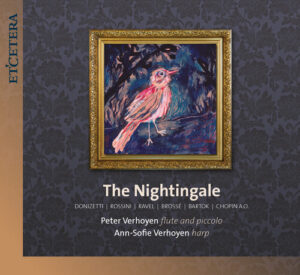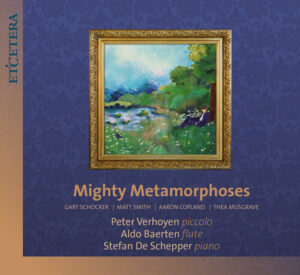1. Short Attention Spans, for Piccolo, Flute and Piano: Simple Pleasure
Composer: Gary Schocker
Artist(s): Peter Verhoyen, Aldo Baerten, Stefan de Schepper
2. Short Attention Spans, for Piccolo, Flute and Piano: Goldfish
Composer: Gary Schocker
Artist(s): Peter Verhoyen, Aldo Baerten, Stefan de Schepper
3. Short Attention Spans, for Piccolo, Flute and Piano: Fun House
Composer: Gary Schocker
Artist(s): Peter Verhoyen, Aldo Baerten, Stefan de Schepper
4. Piccolo Sonata No. 4, for Piccolo and Piano: Properly…
Composer: Matt Smith
Artist(s): Peter Verhoyen, Stefan de Schepper
5. Piccolo Sonata No. 4, for Piccolo and Piano: Tranquil
Composer: Matt Smith
Artist(s): Peter Verhoyen, Stefan de Schepper
6. Piccolo Sonata No. 4, for Piccolo and Piano: Seriously!!!
Composer: Matt Smith
Artist(s): Peter Verhoyen, Stefan de Schepper
7. Duo, for Flute and Piano: Flowing
Composer: Aaron Copland
Artist(s): Aldo Baerten, Stefan de Schepper
8. Duo, for Flute and Piano: Poetice, Somewhat Mournful
Composer: Aaron Copland
Artist(s): Aldo Baerten, Stefan de Schepper
9. Duo, for Flute and Piano: Lively, with Bounce
Composer: Aaron Copland
Artist(s): Aldo Baerten, Stefan de Schepper
10. Piccolo Sonata No. 3, for Piccolo and Piano: I
Composer: Gary Schocker
Artist(s): Peter Verhoyen, Stefan de Schepper
11. Piccolo Sonata No. 3, for Piccolo and Piano: II
Composer: Gary Schocker
Artist(s): Peter Verhoyen, Stefan de Schepper
12. Piccolo Sonata No. 3, for Piccolo and Piano: III
Composer: Gary Schocker
Artist(s): Peter Verhoyen, Stefan de Schepper
13. Piccolo Play, for Piccolo and Piano: L’Enchanteresse
Composer: Thea Musgrave
Artist(s): Peter Verhoyen, Stefan de Schepper
14. Piccolo Play, for Piccolo and Piano: L’Amphibie
Composer: Thea Musgrave
Artist(s): Peter Verhoyen, Stefan de Schepper
15. Piccolo Play, for Piccolo and Piano: La Pateline
Composer: Thea Musgrave
Artist(s): Peter Verhoyen, Stefan de Schepper
16. Piccolo Play, for Piccolo and Piano: Les Papillons
Composer: Thea Musgrave
Artist(s): Peter Verhoyen, Stefan de Schepper
17. Piccolo Play, for Piccolo and Piano: Le Reveil-Matin
Composer: Thea Musgrave
Artist(s): Peter Verhoyen, Stefan de Schepper
18. Piccolo Play, for Piccolo and Piano: Le Bruit de Guerre
Composer: Thea Musgrave
Artist(s): Peter Verhoyen, Stefan de Schepper
19. Piccolo Play, for Piccolo and Piano: Le Turbulent
Composer: Thea Musgrave
Artist(s): Peter Verhoyen, Stefan de Schepper









Reviews
There are no reviews yet.